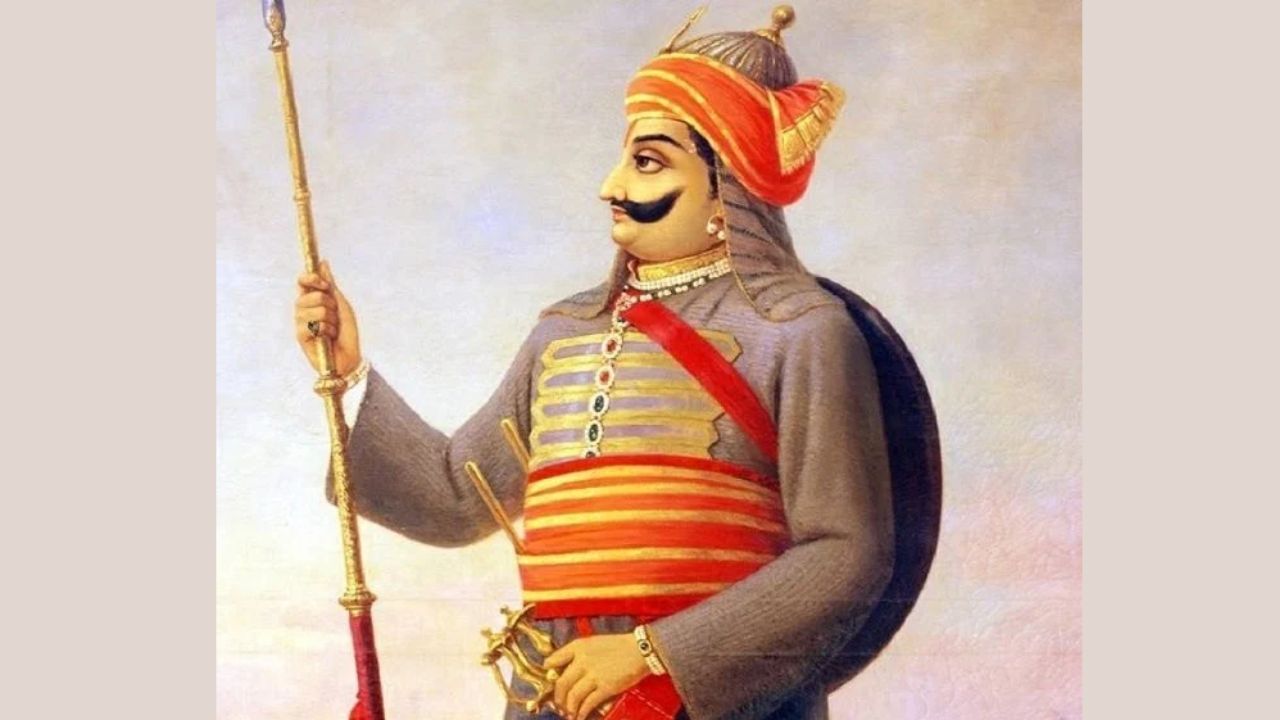Maharana Pratap Biography: Maharana Pratap, one of the finest Indian warriors, was born on May 9, 1540. Maharana Pratap was the governor of Mewar, a modern Rajasthani province.
The eldest son of Uday Singh II, the founder of Udaipur, and Maharani Jaiwant Bai was Pratap. Pratap, renowned as a fearsome combatant and an exceptional combat strategist, defended the Mewar region against repeated Mughal attacks.
Maharana Pratap Biography
Maharana Pratap Singh Early Life and Childhood
He was born in Kumbhalgarh, Rajasthan, on May 9, 1540. His father was Maharana Udai Singh II, and his mother was Rani Jeevant Kanwar. Mewar was ruled by Maharana Udai Singh II, with Chittor as his capital. Since Maharana Pratap was the eldest of twenty-five sons, he was bestowed the title of Crown Prince. In the Sisodiya Rajput dynasty, he was destined to become the 54th ruler of Mewar.
The Mughal forces of Emperor Akbar surrounded Chittor in 1567, when Crown Prince Pratap Singh was only 27 years old. Instead of surrendering to the Mughals, Maharana Udai Singh II decided to relocate his family to Gogunda and abandon Chittor. Young Pratap Singh decided to remain and fight the Mughals, but his elders convinced him to leave Chittor, unaware that his departure from Chittoor would forever alter the course of history.
In Gogunda, Maharana Udai Singh II and his nobles established a temporary Mewar kingdom government. The death of the Maharana in 1572 paved the way for Crown Prince Pratap Singh to succeed him as Maharana. In contrast, the late Maharana Udai Singh II yielded to the influence of his favourite consort, Rani Bhatiyani, and decreed that her son Jagmal would succeed to the throne.
According to his father’s wishes, Pratap Singh appointed his half-brother Jagmal as his successor as monarch. Jagmal was compelled to abdicate the throne to Pratap Singh by the late Maharana’s nobles, particularly the Chundawat Rajputs, who knew that this would be disastrous for Mewar. Unlike Bharat, Jagmal did not voluntarily abdicate the throne. He swore vengeance and travelled to Ajmer to join Akbar’s army, where he was promised Jahazpur in exchange for his assistance.
Maharana Pratap Singh Military Career
Conflict of Haldighati
Maharana Pratap Singh engaged Akbar’s forces commanded by Man Singh I of Amer in the Battle of Haldighati on 18 June 1576. The Mughals were victorious and slaughtered a significant number of Mewaris, but were unable to capture the Maharana. (#14) The combat occurred in a narrow mountain pass near Rajsamand, now known as Gogunda, in Rajasthan. On his side, Pratap Singh had approximately 3000 cavalry and 400 Bhil archers. The Mughal commander was Man Singh of Amber, who commanded an army of 5,000 to 10,000 soldiers. After a ferocious battle lasting more than six hours, the Maharana was wounded and the day was lost. He was able to escape to the highlands and rejoin the fight the following day.
The Mughals were unable to capture or kill Maharana Pratap Singh or any member of his immediate family in Udaipur, rendering Haldighati a meaningless victory. As soon as the empire’s focus shifted north-northwest, Pratap and his army recaptured the western regions of his empire. Number 16 Despite Pratap’s ability to escape unharmed, the conflict was unable to break the stalemate between the opposing forces. Following this, Akbar waged a concerted war against the Rana, and by its conclusion, he had captured Goganda, Udaipur, and Kumbhalgarh.
History of Rana Pratap Resurgence
After 1579, Mughal pressure on Mewar lessened as a result of rebellions in Bengal and Bihar and Mirza Hakim’s incursion into Punjab. Pratap Singh captured the Mughal post at Dewair (or Dewar) during the Battle of Dewair (1582). Consequently, all 36 Mughal military outposts in Mewar were effectively eliminated. After this defeat, Akbar ceased his military campaigns against Mewar. James Tod deemed Dewar’s victory Maharana’s crowning achievement, dubbing it the “Marathon of Mewar.”
Akbar moved to Lahore in 1585 and remained there for the next twelve years, observing the situation in the northwestern region. No significant Mughal expeditions were sent to Mewar during this time. Pratap seized the opportunity and seized control of Western Mewar, which included Kumbhalgarh, Udaipur, and Gogunda. During this period, he also constructed a new capital, Chavand, near modern-day Dungarpur.
Maharana Pratap Singh Personal Life
There were seventeen sons, eleven women, and five daughters in Maharana Pratap’s family. His favourite companion, however, was his first wife, Maharani Ajabde Punwar. He was the first person to secure a knot in 1557. His first son, Amar Singh I, was born in 1559 and would succeed him in the future.
According to legend, Pratap married ten additional princesses to keep the Rajputs united. It is said that Pratap spent the majority of his youth in the forest and that his family once had to subsist on grass chapatis.
Maharana Pratap Death
On January 19, 1597, at the age of 56, Maharana Pratap Singh passed away in Chavand from injuries sustained in a hunting accident. His successor was Amar Singh I, his oldest son. On his deathbed, Pratap instructed his son not to surrender to the Mughals and to reclaim Chittor.
Atharvaa Biography: Birthday, Early Life, Career, Family, Personal Life, Facts
Facts of Interest Regarding Maharana Pratap
- Maharana Pratap stood 2.25 metres tall and weighed 110 kilogrammes.
- His chest armour weighed 72 kilogrammes, and his spear weighed 81 kilogrammes.
- The combined weight of the shield, spear, two blades, and armour of Maharana Pratap was approximately 208 kilogrammes.
- He had eleven spouses, five sons, and seventeen daughters. The names of his spouses are Ajabde Punwar, Rani Lakhabai, Rani Champabai Jhati, Rani Shahmatibai Hada, Rani Ratnawatibai Parmar, Rani
- Solankhinipur Bai, Rani Amarbai Rathore, Rani Phool Bai Rathore, Rani Alamdebai Chauhan, Rani Jasobai Chauhan, and Rani Khichar Ashabai.
- Maharana Pratap and his family were forced to live in the forest for an extended period of time, surviving on chapattis made from vegetation. After a wild cat stole a grass roti from the hands of the
- Maharana’s daughter, he decided to capitulate to Akbar. He wrote a letter to Akbar detailing his intentions to submit, and Akbar joyfully forwarded the letter to Prithviraj, a poet and Rajput warrior who worked for Akbar. Prithviraj’s reply to the Maharana gave Pratap the confidence and strength to confront Akbar.
- Maharana Pratap and his forces were constantly at war with the Mughals, resulting in a financial crisis that left him unable to sustain his army. The minister of Maharana Pratap, Bhama Shah, then provided financial assistance to Pratap, enabling him to support and maintain his army for the next twelve years.




